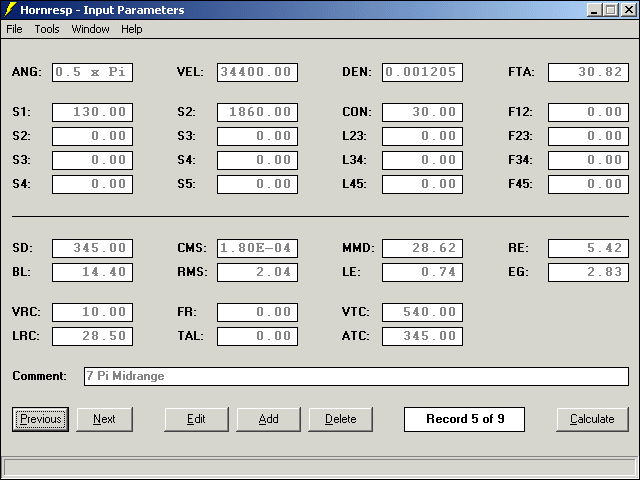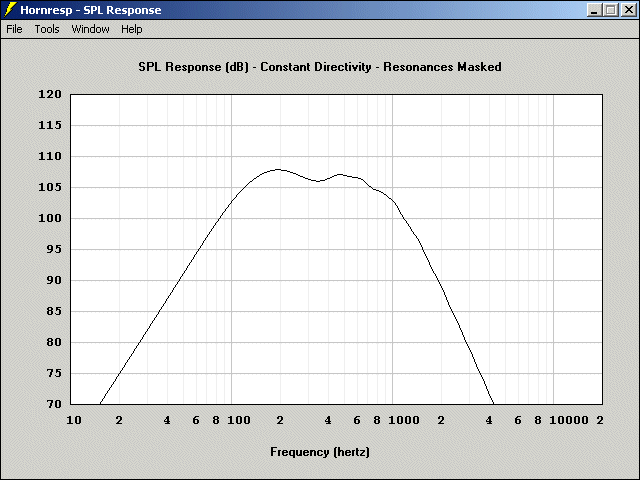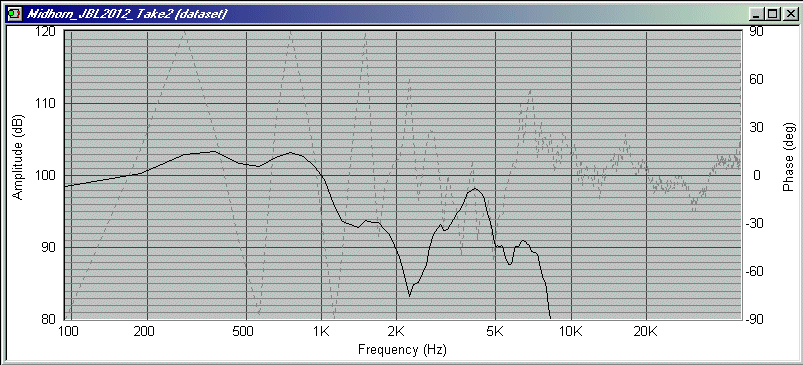Here's the Hornresp input file, simulated response and actual measured response of a π midhorn using a JBL 2012 driver. You'll notice they correlate well, but at high frequencies, there are some peaks that don't show up in the model. That's because of cone breakup. The model calculates assuming a rigid piston cone, but at high frequencies, the cone starts to vibrate along its surface. That means parts of the surface are decoupled from others, effectively acting like several smaller cones having lighter mass. Hornresp input data for π midhorn with JBL 2012 driver
Hornresp input data for π midhorn with JBL 2012 driver
 Hornresp simulated response for π midhorn with JBL 2012 driver
Hornresp simulated response for π midhorn with JBL 2012 driver
 Measured response of π midhorn with JBL 2012 driver
Measured response of π midhorn with JBL 2012 driver
If you're studying Hornresp, you might model some folded basshorns. The folds tend to attenuate HF, so cone breakup is rolled off. Because of that, measurements of folded horns tend to agree quite well with models. See the models of the 12π basshorn subwoofer, for example.
12π basshorn model
Effects of changing 12π horn front chamber volume







